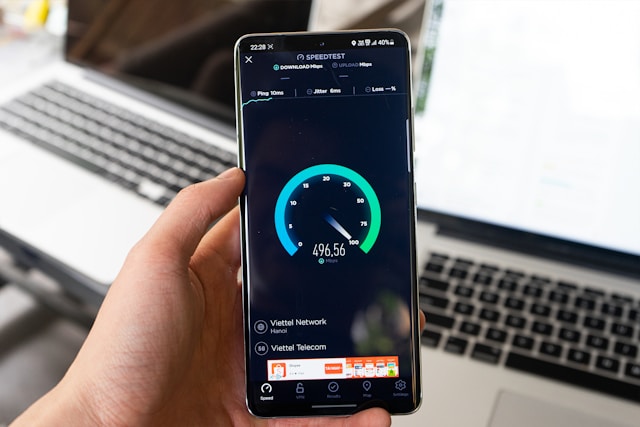Table of Contents
Network Function Virtualization revolutionizes how network services are designed, deployed, and managed. NFV enables the separation of network functions from specialized hardware devices, enabling these functions to operate through software.
This transformation reduces costs, increases operational efficiency, and significantly enhances flexibility and scalability within network infrastructure. Businesses and service providers leveraging NFV can rapidly deploy and scale their network services on-demand, adjusting to the changing market needs with agility.
What is Network Functions Virtualization - NFV Meaning?
Network Function Virtualization is a networking concept that involves virtualizing network functions to improve network efficiency and agility. It is an alternative approach to traditional physical hardware-based networking, where dedicated hardware devices perform network functions such as routing, load balancing, and firewalls.
NFV is based on separating network functions from hardware and running them as software-based applications on a virtualized infrastructure. This allows network operators to deploy, manage, and scale network functions flexibly and cost-effectively.
Why is NFV Important?
NFV offers several advantages over traditional networking, making it an essential technology for modern networks. Some of these advantages include:
Reduced Costs
With NFV, network operators can replace expensive dedicated hardware with virtualized software applications running on standard servers. This eliminates the need for costly proprietary hardware, reducing capital and operational expenses.
Increased Agility
Network Functions Virtualization enables quick deployment and scaling of network functions, reducing the time to market for new services or updates. Virtualized network functions can be rapidly provisioned and adjusted in response to demand, offering more flexibility than conventional networking methods.
Improved Efficiency
By abstracting network functions from hardware, NFV allows for better resource utilization and allocation. This results in improved network performance and optimized resource usage.
Simplified Network Management
With NFV, network operators can manage multiple virtualized network functions through a centralized management system, reducing complexity and improving efficiency.
Scalability
It enables seamless scaling of network functions to meet the changing demands of a network. VNFs can be easily replicated and deployed across multiple servers, providing scalability and high availability.
How Does NFV work?
In an NFV architecture, hardware devices are replaced with software-based virtualized network functions (VNFs) running on a hypervisor layer. The hypervisor provides the abstraction layer between the physical hardware and virtual instances of network functions. Virtualized infrastructure resources such as storage, computing, and networking host these VNFs.
These VNFs can be managed and orchestrated through a centralized management system, allowing for automation and dynamic scaling of network functions.
Network Functions Virtualization Architecture
The core components of an NFV architecture include:
NFV Infrastructure (NFVI): This virtualized infrastructure hosts VNFs. It comprises computing, storage, and network resources.
Virtualized Network Functions (VNFs): These are software-based network functions that run on the NFVI.
Management and Orchestration (MANO): This is the control layer of the NFV architecture, which is responsible for managing and orchestrating VNFs. It comprises three components: Virtualized Infrastructure Manager (VIM), Virtual Network Function Manager (VNFM), and NFV Orchestrator (NFVO).
NFV Hardware (NFVH): This is the physical equipment used to host the NFVI. It includes servers, storage devices, and network switches.
Challenges of NFV
While NFV offers several benefits, it also comes with its own challenges that must be addressed for successful implementation. Some of these challenges include:
Performance
As VNFs run on virtualized infrastructure, there is a concern about their performance compared to traditional dedicated hardware. Ensuring high-performance levels for critical network functions is crucial for the success of NFV.
Security
The use of software-based applications raises concerns about the security and integrity of data in an NFV environment. Measures must be taken to secure the virtualized infrastructure and VNFs from cyber threats.
Interoperability
Ensuring interoperability between hardware and software elements is challenging as it involves multiple components and vendors. Standards must be established to guarantee seamless integration of various components in an NFV environment.
Network Management Complexity
With the deployment of multiple VNFs, managing the network becomes complex. This requires a robust management and orchestration system to handle the dynamic nature of NFV.
Future of Network Function Virtualization
The future looks bright for NFV as it continues to evolve and bring innovations to networking. Some potential developments in network function virtualization include:
5G Networks: NFV is expected to play a crucial role in deploying 5G networks by providing the agility and flexibility needed for next-generation networking.
Edge Computing: Due to increased edge computing, NFV can move network functions closer to end-users, enhancing network performance and decreasing latency.
Artificial Intelligence: Integrating AI with NFV can bring intelligent automation and self-healing capabilities to network management, improving efficiency and reducing human intervention.

Conclusion
In conclusion, NFV is a game-changing technology with immense potential for modern networks. Its ability to reduce costs, increase agility, and improve network efficiency is expected to continue gaining traction in networking. However, addressing the challenges and ensuring interoperability will be crucial for successfully implementing network function virtualization. As technology continues to evolve, it is set to shape the future of networking and bring about new advancements in the industry.
FAQ About NFV
What is an example of a NFV?
An example of an NFV is a software-based virtual router that runs on a hypervisor layer instead of dedicated hardware. It allows for more flexibility, scalability, and cost-effectiveness in deploying routing functions in a network. Other examples include virtualized firewalls, load balancers, and WAN accelerators.
What is NFV in cyber security?
NFV in cyber security refers to using virtualized network functions to secure networks and data. NFV can provide cost savings, improved performance, and flexibility in implementing cybersecurity measures. Examples include virtual private networks (VPNs), secure web gateways, and intrusion detection systems.
How does NFV benefit cloud computing?
NFV benefits cloud computing by providing the agility and flexibility needed for virtualized infrastructure. It allows for efficient resource allocation and dynamic scaling of network functions, making deploying and managing cloud-based applications easier. NFV also reduces costs by replacing dedicated hardware with software-based virtualized functions.
What is NFV in networking?
In networking, NFV stands for Network Functions Virtualization. The technology virtualizes network functions and runs them on a hypervisor layer instead of dedicated hardware devices. It allows for more flexibility, scalability, and cost-effectiveness in deploying and managing network functions. These functions include routing, switching, firewalls, load balancers, and WAN optimization.
Where is NFV used?
NFV is used in various industries, including telecommunications, cloud computing, data centers, and cybersecurity. Service providers primarily implement it to improve the efficiency of their networks and reduce costs. However, with the rise of edge computing and 5G networks, NFV is expected to be adopted in a broader range of use cases.
What is NFV in 5G?
Network Functions Virtualization plays an essential role in enabling the deployment of 5G networks. With its agility, flexibility, and scalability, NFV can support the dynamic nature of 5G networks. It also allows for efficient resource management and reduces costs compared to traditional hardware-based solutions. NFV is expected to be a key component in building the infrastructure for next-generation 5G networks.



